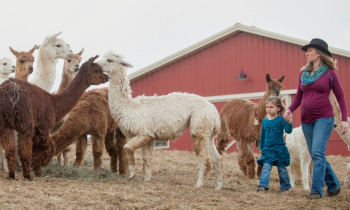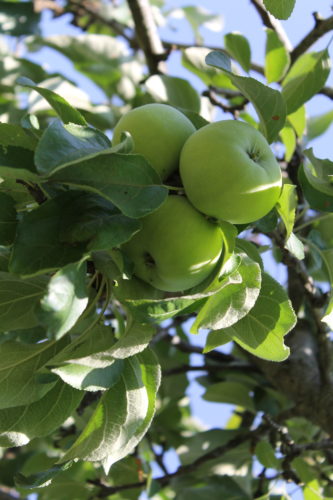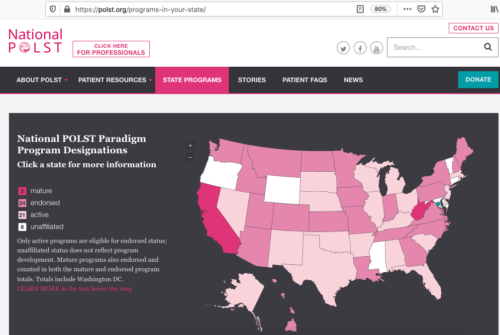The National Center for Appropriate Technology or NCAT has been helping people build resilient communities through local and sustainable solutions that reduce poverty, strengthen self-reliance, and protect natural resources since 1976. NCAT is a national, private non-profit organization providing trusted, individualized technical assistance, hands-on training opportunities, practical educational resources, and peer-to-peer learning networks on nationally acclaimed projects in food, agriculture, energy, and climate resilience. Headquartered in Butte, Montana, NCAT has offices in 13 states. NCAT works to foster and promote sustainable technologies and systems, especially for the benefit of economically disadvantaged individuals and communities. NCAT is committed to advancing racial equity and inclusion in its work and organization.
NCAT is seeking a Full-time or Part-time certified Energy Auditor. The Energy Auditor will work on NCAT’s energy conservation and AgriSolar projects. NCAT’s Energy Services works with commercial buildings and agricultural energy systems to develop energy conservation, solar, and Agrisolar projects for their farms, buildings, and communities. Building energy audits include certified energy audits of HVAC, building envelope, motors, pumps, blowers, and lighting.
This is an excellent opportunity to work with a dedicated and professional staff to develop agrivoltaic and energy conservation projects. The Energy Auditor will work with clients and staff throughout the country, with a focus on energy auditing in Montana. The successful candidate must be willing and able to travel throughout Montana for energy audits, events, workshops, and training as needed. There will be some travel outside of Montana on an occasional basis. Candidates located near NCAT’s Headquarters in Butte Montana have the option of an office located in the NCAT HQ Campus. Candidates not located near Butte will be required to set up and work from a remote office in Montana.
QUALIFICATIONS:
This position requires a combination of education and/or experience in energy systems. The position requires a certification in commercial building energy auditing, such as the American Association of Energy Engineers Certified Energy Auditor (CEA) Program or the ASHRAE Building Energy Auditor Program (BEAP). Experience with energy audits, and field energy assessments, including work with electrical systems, motors, pumps, and blowers is required. Experience with sustainable energy systems, solar development, agrisolar, and agrivoltaics, is preferred.
DESIRED KNOWLEDGE, SKILLS, AND ABILITIES:
- Commitment and passion for the NCAT mission;
- Knowledge and ability to perform in-depth energy audits.
- Strong interest and knowledge in building technologies, energy conservation, residential, agrivoltaics, and solar energy.
- Ability to understand and develop solar and agrivoltaic projects.
- Knowledge of HVAC, building envelope, control systems, electrical systems, lighting, motors, pumps, and blowers.
- Strong organization, time management, and planning skills.
- The ability to calculate data to inform organizational operations.
- Excellent communication skills, with experience in public speaking, and presentations.
- The ability to be flexible and adapt to changing environments and projects.
- Skills in research, technical writing, and editing.
- Demonstrated interest and knowledge in promoting energy efficiency.
- Experience in energy use and conservation modeling.
- Strong organizational and planning skills with attention to detail.
- Self-motivated, with an ability to work independently, as well as with teams.
- High level of emotional intelligence and diplomatic skills, with the ability to work collaboratively across NCAT’s multiple geographies and cultural backgrounds.
- Ability to prioritize work assignments and complete tasks in a timely manner.
- The ability to build relationships and collaborate with community organizations, government agencies, non-profit organizations, and other partners.
- The ability to travel (estimated travel 10-15% of the time).
RESPONSIBILITIES:
- Promote and support NCAT’s mission.
- Conduct certified commercial energy audits.
- Provide technical assistance to farmers, ranchers, land managers, and the public on agrisolar and agrivoltaic development.
- Facilitate incentives and rebates from utilities.
- Perform energy analysis with energy performance software.
- Research technical information on energy efficiency and agrivoltaics.
- Evaluate the condition of properties.
- Assess the cost-effectiveness of products, services, and projects.
- Provide technical assistance to building owners, engineers, architects, contractors, and property management officials on energy-efficient building practices.
- Prepare and edit written descriptions, topical summaries, bibliographies, and other information materials suitable for giving presentations and posting to websites while targeting a variety of audiences of varying degrees of technical knowledge.
- Communicate via email, telephone, and in person to gather and disseminate information.
- Recommends engineering modifications to increase energy performance.
- Provide high-level work and adapt to changing project workload.
- Attend workshops, seminars, and related events in support of project duties.
- Build and strengthen relationships with partners and stakeholders.
SALARY AND BENEFITS:
$55,000 – $62,000 Full-time annual salary depending on qualifications and experience. Salary will be prorated for Part-time status. Excellent benefits include a flexible schedule, paid vacation, sick leave, and holidays, health, dental, vision, life, and disability insurance, a cafeteria and 401(k) plan, and a pleasant, professional environment.
APPLICATION PROCESS:
Applications will be accepted until a suitable candidate can be identified. Early applications are encouraged. Applicants are encouraged to visit www.ncat.org to learn more about NCAT. NCAT employees interested in the position should email Human Resources a letter of interest as soon as possible. All persons interested in being considered for the position should upload a resume and cover letter through BambooHR. Please submit a current resume and a cover letter highlighting experience and skills relevant to the listed qualifications. Resume and cover letters can be uploaded at https://ncat.bamboohr.com/careers. Simply choose the position you are applying for and then click “apply for this job” to upload the required resume and cover letter. Questions about the application process can be directed to:
Kriss Sullivan, Director of Human Resources
e-mail: jobs@ncat.org
NCAT’s mission is to help people build resilient communities through local and sustainable solutions that reduce poverty, strengthen self-reliance, and protect natural resources. Our work brings together diverse partnerships and communities to help reduce poverty and protect our natural resources. We strive to be a multicultural organization that embraces the rich dimensions of diversity such as race, ethnicity, gender identity, sexual orientation, socio-economic status, age, physical ability, religious or political belief and marital or veteran status. Diversity creates healthy communities. Special consideration will be given to applicants who are reflective of the communities that we serve. NCAT is an Equal Opportunity Employer.
For additional information about NCAT please visit our website at www.ncat.org.

 Maynard says when she set out to launch her alpaca farm, she had no idea of the sustainable agriculture resources and farmer-veteran community that already existed. “When I came on to my land, it wasn’t in great shape,” she says. “I overgrazed my fields when I first started. I didn’t know how to manage ruminants correctly. ATTRA gave me the tools I needed to be able to do that. Not only did my land rebound, but the forage production per acre has at least doubled if not tripled because of the resources ATTRA empowered me with. I am now able to grow much more with less.”
Maynard says when she set out to launch her alpaca farm, she had no idea of the sustainable agriculture resources and farmer-veteran community that already existed. “When I came on to my land, it wasn’t in great shape,” she says. “I overgrazed my fields when I first started. I didn’t know how to manage ruminants correctly. ATTRA gave me the tools I needed to be able to do that. Not only did my land rebound, but the forage production per acre has at least doubled if not tripled because of the resources ATTRA empowered me with. I am now able to grow much more with less.” 



 The professionals have other tools, like a starch test and a refractometer for measuring sugars, but even the pros will use the four other indicators listed above.
The professionals have other tools, like a starch test and a refractometer for measuring sugars, but even the pros will use the four other indicators listed above.